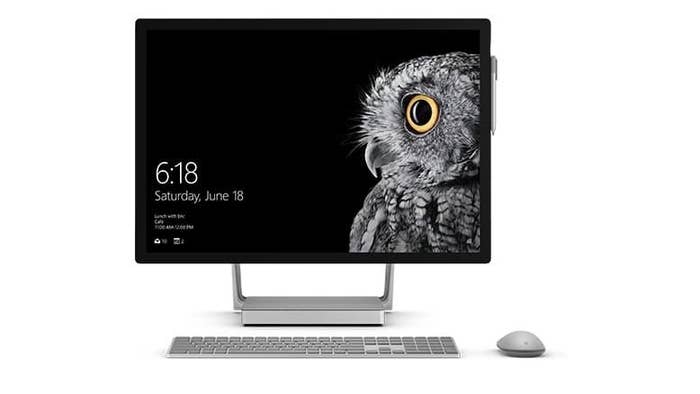
Microsoft announced its first ever desktop computer at an event in Manhattan on Wednesday morning. Called the Surface Studio, the device is designed to go after the creative professional class with which Apple’s iMac has long held sway.
“It’s meant to transform the way you work and create,” said Microsoft’s VP of Devices Panos Panay.
The Studio boasts a 28-inch screen, a slick swiveling base, and a bank of microphones designed to provide access to Microsoft’s virtual assistant, Cortana. More interestingly, it has two chrome arms that pivot on a hinge to let users push the device down into a 20-degree drafting angle intended to be used with the company’s stylus, the Surface Pen.
“It’s a new way to create,” said Panay. “You don’t have to be an artist. You can be an accountant, late at night, creating a symphony on a spreadsheet.”

To the pen and touch screen, the Surface Studio adds a new peripheral called the Surface Dial — a wheel that can be used to scroll, rewind, and fast-forward, and be placed on the screen to interact with image-editing and drawing apps.
The Studio is available to pre-order today and will cost $3,000. Panay said the computer "will be available in limited quantities this holiday."
In addition to the Studio, Microsoft also announced updates to its Surface Book computers. The company says the next-generation version of its touchscreen laptop is faster, runs cooler, and offers better battery life.
“It is pound for pound, without any doubt, the most performant laptop on the market,” said Panay.
Surface Studio's unprecedented versatility adjusts to every step of your creative process. #MicrosoftEvent
Before introducing the new devices, Microsoft's leadership spent time describing the newest iteration of its Windows 10 operating system — which the new Surfaces will run. The Windows 10 Creators Update, which will launch next spring, focuses broadly on incorporating 3D into the operating system. That focus includes the ability to 3D scan physical objects with Windows 10 phones, a new version of Microsoft’s staple Paint app called Paint 3D, and the ability to take 3D objects built with the Creators Update and drop them into AR and VR environments.
“We're hoping to have the effect of the Gutenberg press on the next generation of computing,” said an optimistic Terry Myerson, executive vice president of the Windows and Devices Group.
In addition to the new focus on 3D, Microsoft also announced at the event incremental upgrades to sharing and gaming in Windows 10, including new game-broadcasting support for Xbox One.
"We are the company that stands for the builders, the makers, and the creators," said Microsoft CEO Satya Nadella.
